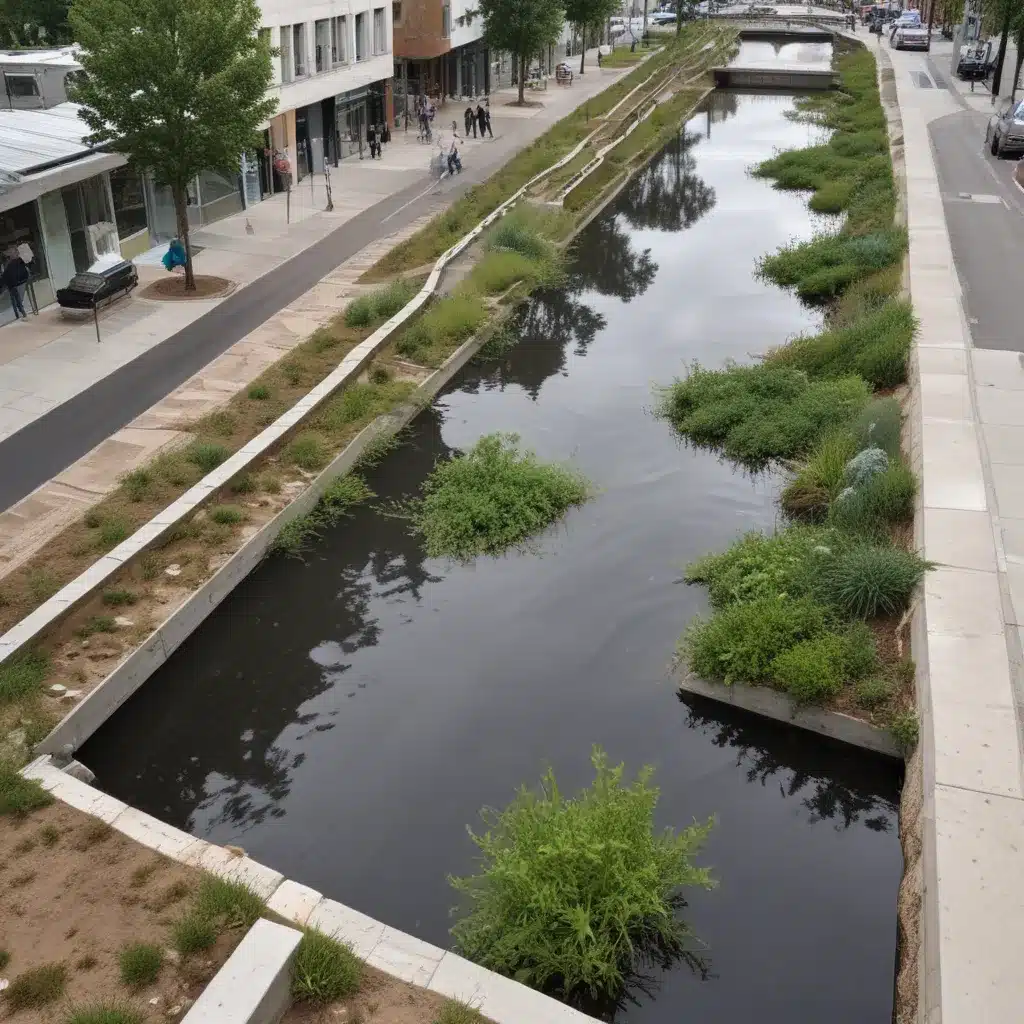
As an experienced flood control specialist, I understand the critical importance of designing and implementing effective stormwater management systems to mitigate urban flooding risks. Conventional approaches to urban drainage, often reliant on centralized networks of pipes and detention basins, are increasingly proving insufficient to address the challenges posed by climate change, urbanization, and aging infrastructure. In this article, I will explore how integrating decentralized, nature-based, and smart technology solutions can enhance the sustainability, resilience, and cost-effectiveness of urban stormwater management.
Decentralised Stormwater Solutions
Decentralized stormwater management strategies move away from the traditional “collect-and-convey” approach, instead focusing on distributed, on-site solutions that reduce the overall volume of runoff and delay peak flows. These strategies include techniques such as permeable surfaces, green infrastructure, and rainwater harvesting.
Permeable surfaces, such as porous pavement and permeable pavers, allow stormwater to infiltrate directly into the ground, reducing the burden on traditional drainage systems. This not only mitigates flooding but also promotes groundwater recharge and helps maintain natural hydrological processes. When implemented at scale across a city, permeable surfaces can have a significant impact on stormwater management.
Green infrastructure, including bioswales, rain gardens, and urban wetlands, leverages the natural ability of vegetation and soil to slow, store, and filter runoff. These nature-based solutions not only manage stormwater effectively but also provide additional environmental and social benefits, such as urban heat island mitigation, air quality improvement, and enhanced biodiversity.
Rainwater harvesting systems collect and store precipitation from rooftops and other surfaces for non-potable uses, such as landscape irrigation and toilet flushing. By reducing the demand on municipal water supplies, rainwater harvesting can alleviate pressure on stormwater infrastructure while also conserving precious water resources.
Nature-Based Flood Control Strategies
Aside from decentralized solutions, nature-based approaches to flood control offer a range of benefits that go beyond traditional structural measures. These strategies harness the natural functions of ecosystems to provide flood protection, often in a more cost-effective and environmentally-friendly manner.
Wetland restoration is a prime example of a nature-based flood control strategy. Wetlands can act as natural sponges, temporarily storing and slowly releasing floodwaters, thereby reducing the risk of downstream flooding. Additionally, wetlands provide habitat for a diverse array of wildlife and offer recreational and educational opportunities for the community.
Urban forests and tree canopy expansion can also play a vital role in stormwater management. Trees intercept precipitation, slow the flow of runoff, and promote soil infiltration, all of which contribute to reduced flood risk. Furthermore, urban forests enhance the aesthetic appeal of a city, improve air quality, and provide valuable shade and cooling benefits.
Bioswales, which are shallow, vegetated channels designed to convey, filter, and infiltrate stormwater, are another nature-based solution. Bioswales not only manage runoff but also trap sediment and pollutants, improving water quality and promoting groundwater recharge.
Smart Technology Integration
In addition to decentralized and nature-based solutions, the integration of smart technology can significantly enhance the efficiency and effectiveness of urban stormwater management systems.
Real-time monitoring of rainfall, water levels, and flow rates allows for data-driven decision-making and proactive responses to impending flood events. Sensor networks, coupled with advanced analytics and predictive modeling, can provide early warning systems and facilitate the targeted deployment of flood mitigation measures.
Automated control systems, such as smart valves and gates, can dynamically regulate the flow of water through the drainage network, optimizing the utilization of storage capacity and reducing the risk of overtopping or backflow. These systems can be programmed to respond to changing conditions in real-time, ensuring more effective flood control.
Predictive analytics and machine learning algorithms can analyze historical data and weather forecasts to anticipate flood risks, enabling preemptive actions and improved resource allocation. By integrating these smart technologies, stormwater management systems can become more responsive, efficient, and resilient in the face of urban flooding challenges.
Cost Considerations and Maintenance
While the upfront costs of implementing decentralized, nature-based, and smart technology solutions may be higher than traditional approaches, the long-term benefits often outweigh the initial investment. Decentralized systems, for example, can reduce the need for costly expansions or upgrades to centralized infrastructure, while nature-based solutions can provide additional ecosystem services that generate economic value.
Furthermore, the maintenance requirements for these innovative stormwater management strategies are often lower than their conventional counterparts. Permeable surfaces, for instance, require periodic cleaning to prevent clogging, while green infrastructure and nature-based solutions are largely self-sustaining once established. The integration of smart technologies can also aid in proactive maintenance, allowing for targeted interventions and more efficient use of resources.
Regulatory Considerations and Adoption Barriers
Implementing these sustainable stormwater management solutions may require navigating a complex regulatory landscape. Policymakers and regulatory bodies play a crucial role in creating frameworks that incentivize the adoption of decentralized, nature-based, and smart technology approaches. This may involve updating building codes, offering stormwater fee discounts, or providing funding and technical assistance for innovative projects.
Despite the evident benefits, the widespread adoption of these innovative stormwater management strategies can face various barriers, such as institutional inertia, public skepticism, and a lack of familiarity among decision-makers and practitioners. Overcoming these challenges will require a concerted effort to educate stakeholders, demonstrate the efficacy of these solutions through pilot projects, and foster collaboration between the public and private sectors.
Conclusion
As urban areas continue to grapple with the increasing challenges of stormwater management, the integration of decentralized, nature-based, and smart technology solutions offers a promising pathway towards more sustainable, resilient, and cost-effective flood control. By leveraging the unique strengths of these approaches, municipalities and communities can reduce flood risks, enhance water quality, and create more livable and environmentally-friendly urban environments.
To learn more about innovative stormwater management strategies, I encourage you to visit the Flood Control 2015 website, where you can find a wealth of resources and expert insights on the latest advancements in this critical field.
Example: Manchester Advanced Flood Control Project 2024















